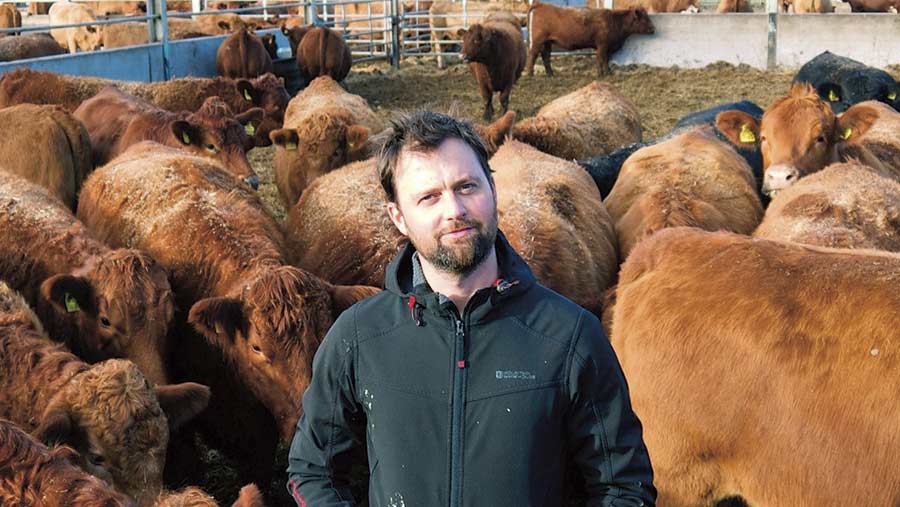How using AI is benefitting a Cambridgeshire beef farm

Difficulty securing regular artificial insemination technicians has prompted one Cambridgeshire suckler producer to enrol on an AI training course.
Dan Burling says he had become frustrated by the lack of available AI technicians for his 250 sucklers, run in partnership with his brother on their 550ha farm at Over, near Cambridge.
Burling Brothers finishes bulls for Morrisons and winters dry cows and heifers in outside yards.
See also: Opinion: Stabiliser cattle show progressive way forward
As a Stabiliser multiplier herd, they breed all their own replacements and produce breeding stock, which are then marketed through the Stabiliser Cattle Company, explains Mr Burling.
“It also means I performance record and choose heifers based on maternal estimated breeding values (EBVs) to run with bulls,” he says.
Benefits of DIY AI
- Improve genetic gain
- Don’t have to rely on a technician and could reduce costs
- Have best genetics to chose from
- Don’t have costs associated with buying and keeping bulls
- Can prevent inbreeding
But efforts to introduce the top genetics through AI were being held back.
“We tried using AI a number of years ago, but it didn’t work for our system at the time. In our area, we couldn’t find technicians or vets who were available to come at the right time when serving to natural heats,” Mr Burling explains.
So he decided to embark on the AI course run by XLVets at Bishopton Veterinary Group in North Yorkshire, which is part-funded by AHDB Beef & Lamb.
AI is not commonly used on suckler farms, but it offers producers a way of improving herd genetics by accessing the best AI bulls without the cost of buying and keeping a bull on farm.
“When I heard about the part-funded course, I thought this would be the best opportunity to gain the necessary skills to carry out AI myself.
“Now I have the skills, I’m hoping to AI all of the cattle to be in line with the Stabiliser total UK Herd Breed Programme,” says Mr Burling.
“The programme selects elite cows using EBVs and assigns bulls to them so that the UK herd achieves maximum genetic gain – avoiding breeding dead ends or in-breeding, which reduces hybrid vigour,” he says.
Burling Brothers’ breeding programme
Mr Burling aims to breed and sell stock bulls to other suckler producers and uses embryo transfer to produce elite animals from imported USA Stabiliser breed programme stock. He puts about 30 embryos into heifer recipients with lower EBVs each year.
“The most important EBV to us is the maternal production value, however, we will group cows to match bulls and vice versa, to try to improve all EBVs,” he says.
The farm sells finished bulls to Woodheads and any heifers that do not make the breeding grade are kept as stores and then sold.
Ultrasound scanning and heat detection
Mr Burling is also ultrasound scanning finished animals for rib-eye area and marbling to select for eating quality and increased prime cut percentage. This data is also fed into EBVs to help select breeding animals.
“Just before I completed the course I bought a second-hand AI tank and the equipment to go with it,” he says.
“We use scratch cards on the tail head for heat detection with the embryo synchronisation programme, but eventually this is something we’d like to use when we fully implement the AI.
“I now feel confident having the skills at my disposal to AI my cattle, offering greater flexibility in the breed programme and ensuring I use the best bulls,” Mr Burling adds.
